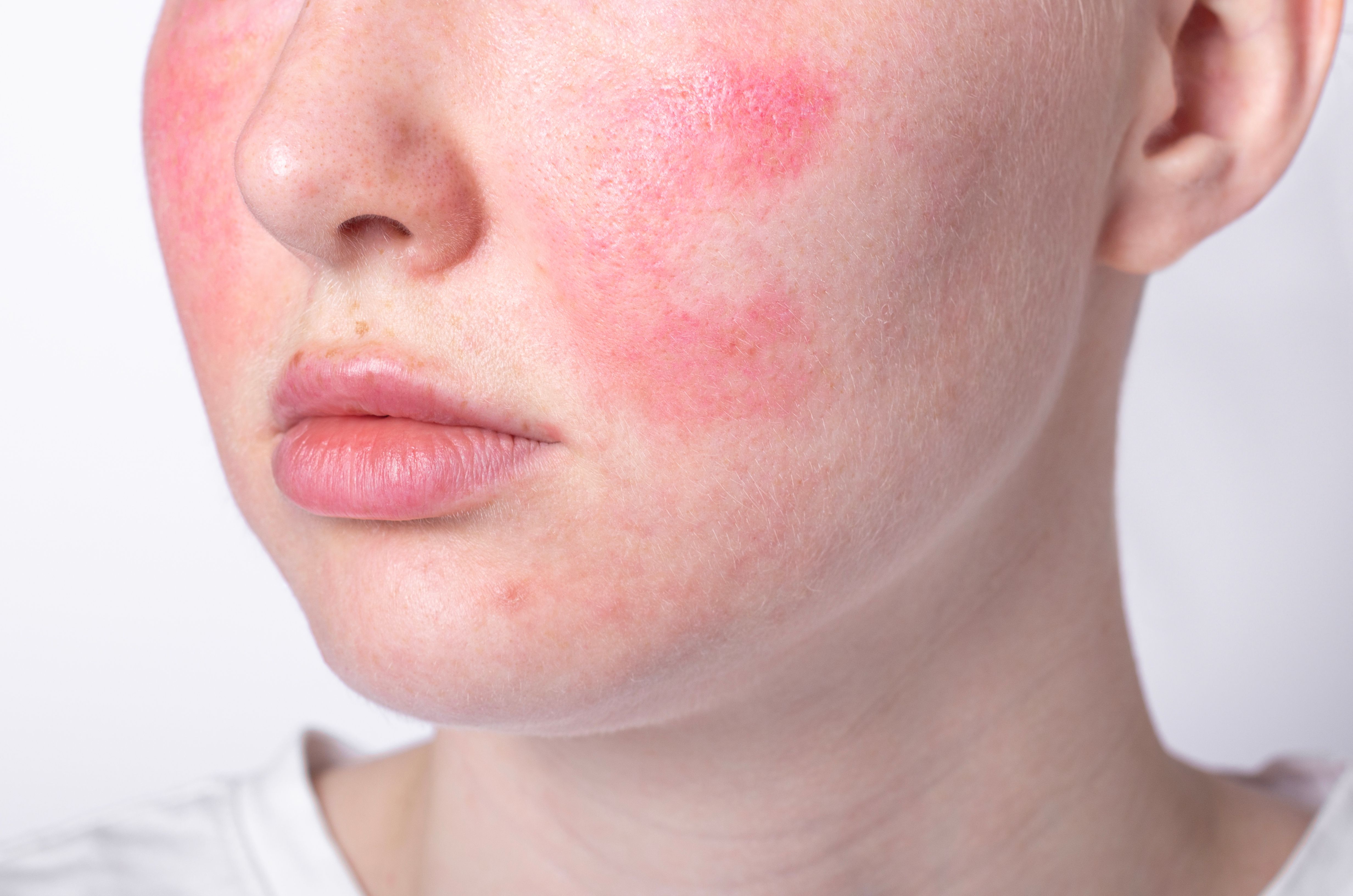- Acne
- Actinic Keratosis
- Aesthetics
- Alopecia
- Atopic Dermatitis
- Buy-and-Bill
- COVID-19
- Case-Based Roundtable
- Chronic Hand Eczema
- Chronic Spontaneous Urticaria
- Drug Watch
- Eczema
- General Dermatology
- Hidradenitis Suppurativa
- Melasma
- NP and PA
- Pediatric Dermatology
- Pigmentary Disorders
- Practice Management
- Precision Medicine and Biologics
- Prurigo Nodularis
- Psoriasis
- Psoriatic Arthritis
- Rare Disease
- Rosacea
- Skin Cancer
- Vitiligo
- Wound Care
Article
Topical treatment options for rosacea increase
The treatment of rosacea is becoming increasingly patient-friendly, according to an expert.
Miami Beach, Fla. - The treatment of rosacea is becoming increasingly patient-friendly, according to an expert.
In particular, says Frank C. Powell, M.D., “The treatment of rosacea has been refined in recent years.” Dr. Powell, a consultant dermatologist at the Charles Institute of Dermatology, University College Dublin, spoke at the American Academy of Dermatology annual meeting.
The current approach begins with either topical or systemic antibiotics, depending on disease severity, he explains. For highly inflamed, active disease, “We usually start with systemic antibiotics - such as minocycline, erythromycin and doxycycline - to cool down the skin.”
Additionally, Dr. Powell says the advent of low-dose doxycycline has advanced the treatment of rosacea. Specifically, he says, a dose of 40 mg daily normally wouldn't have an antibacterial effect. The fact that it works for rosacea suggests it does not kill bacteria, but it provides anti-inflammatory or other as-yet recognized effects, he says. Thanks to the clinical effectiveness and cost-effectiveness of low-dose doxycycline for rosacea, he adds, it’s popular among physicians and patients.
Systemic antibiotics also work for the ocular inflammation of rosacea, Dr. Powell says. “Additionally, one can use topical metronidazole in the eyelashes. And a topical cyclosporine gel has been effective for the ocular lesions of rosacea.” He prescribes systemic antibiotic treatments for a period of six to eight weeks, he adds, versus the four months or more of treatment required for patients with acne.
Exploring isotretinoin
“Another drug that is sometimes used in the management of severe cases of rosacea that are unresponsive to systemic antibiotics is isotretinoin,” Dr. Powell says.
In this regard, he says, “We must be careful in patients with rosacea because isotretinoin’s drying effects on the lips, eyes and skin are poorly tolerated by these patients, who already tend to dryness of the skin. So we use a low-dose isotretinoin treatment, approximately 20 mg daily (Uslu M, Åavk E, Karaman G, Åendur N. Acta Derm Venereol. 2012;92(1):73-77).” This dose provides efficacy, he says, “But unfortunately, when the treatment stops, these patients usually relapse, but their rosacea is often not as severe as previously.” In the study cited above, 45 percent of patients relapsed within 11 months’ follow-up.
Topical maintenance
In managing rosacea, Dr. Powell says, “Remember that it’s a chronic condition - it tends to remit and relapse. So patients will have to reintroduce treatment from time to time. And some patients require maintenance treatment with topical agents such as metronidazole or azelaic acid on a consistent basis. The majority will be able to stop treatment for a period, but they’ll have to be advised to reintroduce the treatment when the condition relapses.”
Conversely, he says that for moderate rosacea, the most commonly used effective topical treatments include metronidazole and azelaic acid 15 percent, both of which are available in cream or gel formulations. Applied twice daily for a period of approximately six weeks, “They are both very effective at providing remissions of rosacea. There are other topical agents that are also effective but less frequently used in this condition.”
For the redness of rosacea, Dr. Powell says, topical brimonidine gel provides a new approach. Although he hasn’t prescribed it, “The literature suggests that it’s very effective in reducing erythema, which patients find very troublesome and annoying.”
In a phase 2 study, a single application of topical brimonidine tartrate gel 0.5 percent achieved a significant improvement in redness reduction over vehicle between 30 minutes and 12 hours post-application. In a second phase 2 study published simultaneously, brimonidine 0.5 percent once daily showed a statistically superior success profile versus vehicle on follow-up days one, 15 and 29 (Fowler J, Jarratt M, Moore A, et al. Br J Dermatol. 2012;166(3):633-641). Once-daily brimonidine gel 0.5 percent also met its clinical endpoints in a pivotal phase 3 trial for rosacea.
Regarding side effects of medications used for rosacea, Dr. Powell says that outside of isotretinoin, “The other medications tend to be very well-tolerated. The side effect profile is similar to that in acne for this group of medications.”
Pregnancy gives pause
As a caveat, he adds that for pregnant women with rosacea, “We do not like to use systemic antibiotic treatment if we can avoid it. However, erythromycin can be given in a dose of 500 mg daily. That appears to be safe, from the obstetricians' point of view.”
By the same token, Dr. Powell says that a topical erythromycin solution appears safe in pregnancy.
Newsletter
Like what you’re reading? Subscribe to Dermatology Times for weekly updates on therapies, innovations, and real-world practice tips.














